MENUMENU
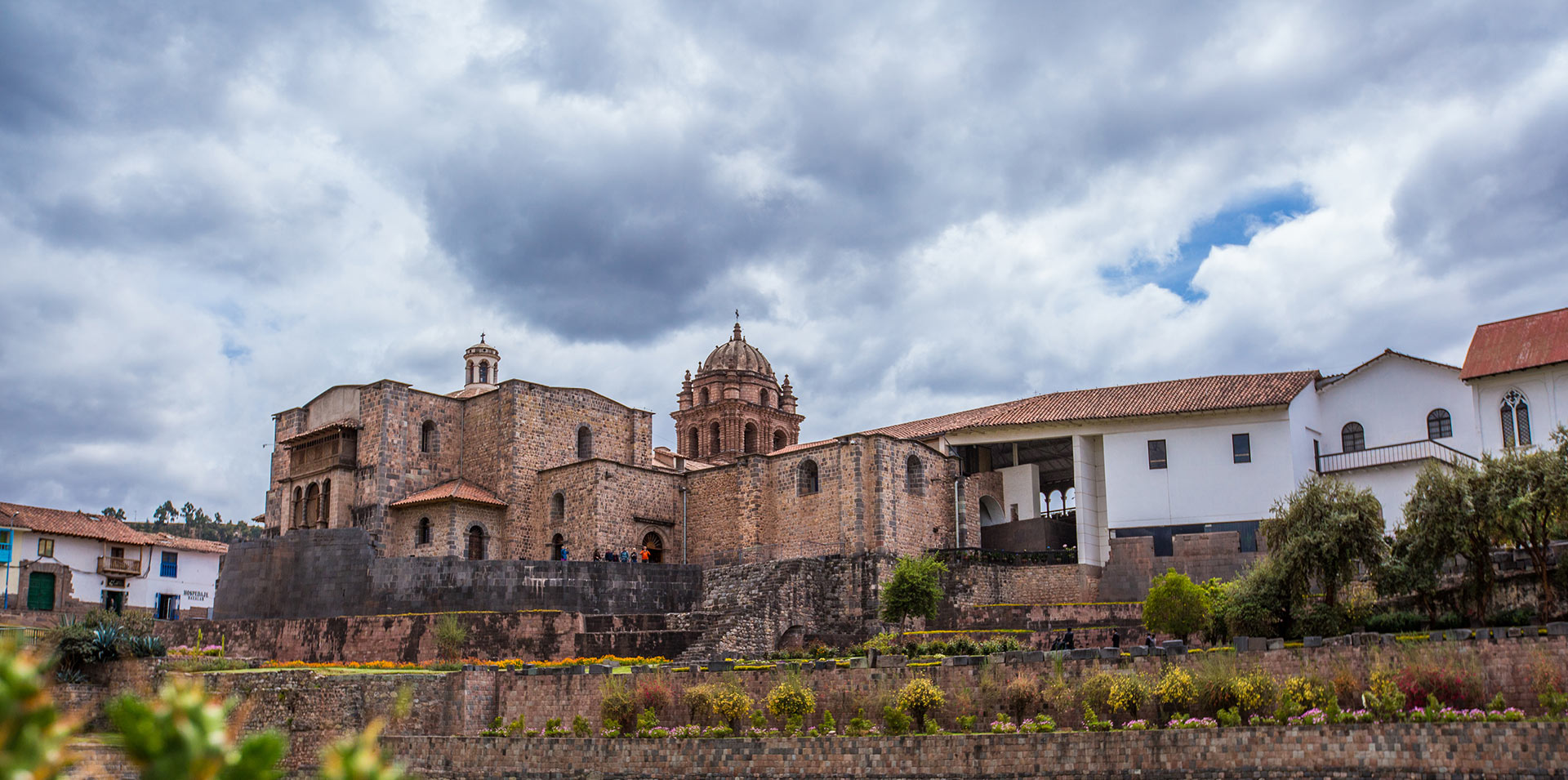
Reading time: 7 mins
Peru is well-known for its majestic scenery, ancient ruins, and vibrant culture, but it is also a wildlife enthusiast’s paradise. From the Andes to the Amazon, Peru is home to a diverse range of unique and exotic animals that can’t be found anywhere else. With over 20,000 plant and animal species to uncover, a journey to Peru is essential for those wishing to have a more profound knowledge of the surrounding wildlife. In this blog, we’ll be taking a closer look at some of the wilderness of Peru you can encounter.
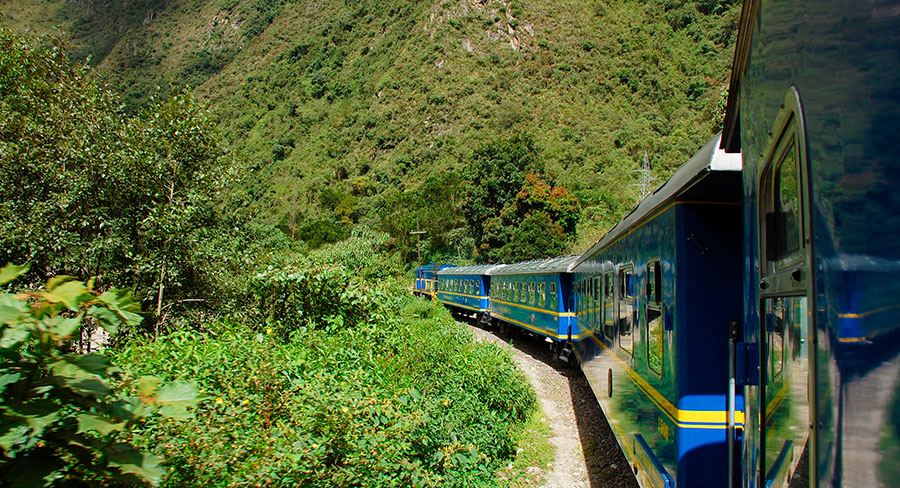
Train traveling from Cuzco to Machu Picchu
Peru’s wildlife includes the Andean Condor, a majestic bird with one of the world’s longest wingspans of any bird. It can also live for up to 50 years in the wild and up to 80 years in captivity. The male Andean condor has a white collar and crest, while the female does not. This magnificent creature is frequently seen soaring over the Andes mountains and may be viewed in Peru’s Colca Canyon. The Andean Condor is very important in Peruvian culture because it is thought to have served as a spiritual guide to the Incas.
During October in Peru, the Andean condor migrates from the Andes peaks to the Pacific coast to consume sea lion carcasses. Andean condors are thermal soarers, which means they rise with the air current, allowing them to identify carcasses from vast heights and descend upon them with little effort. They face various threats as birds with naturally small populations, a wide distribution range, and low reproductive rates.
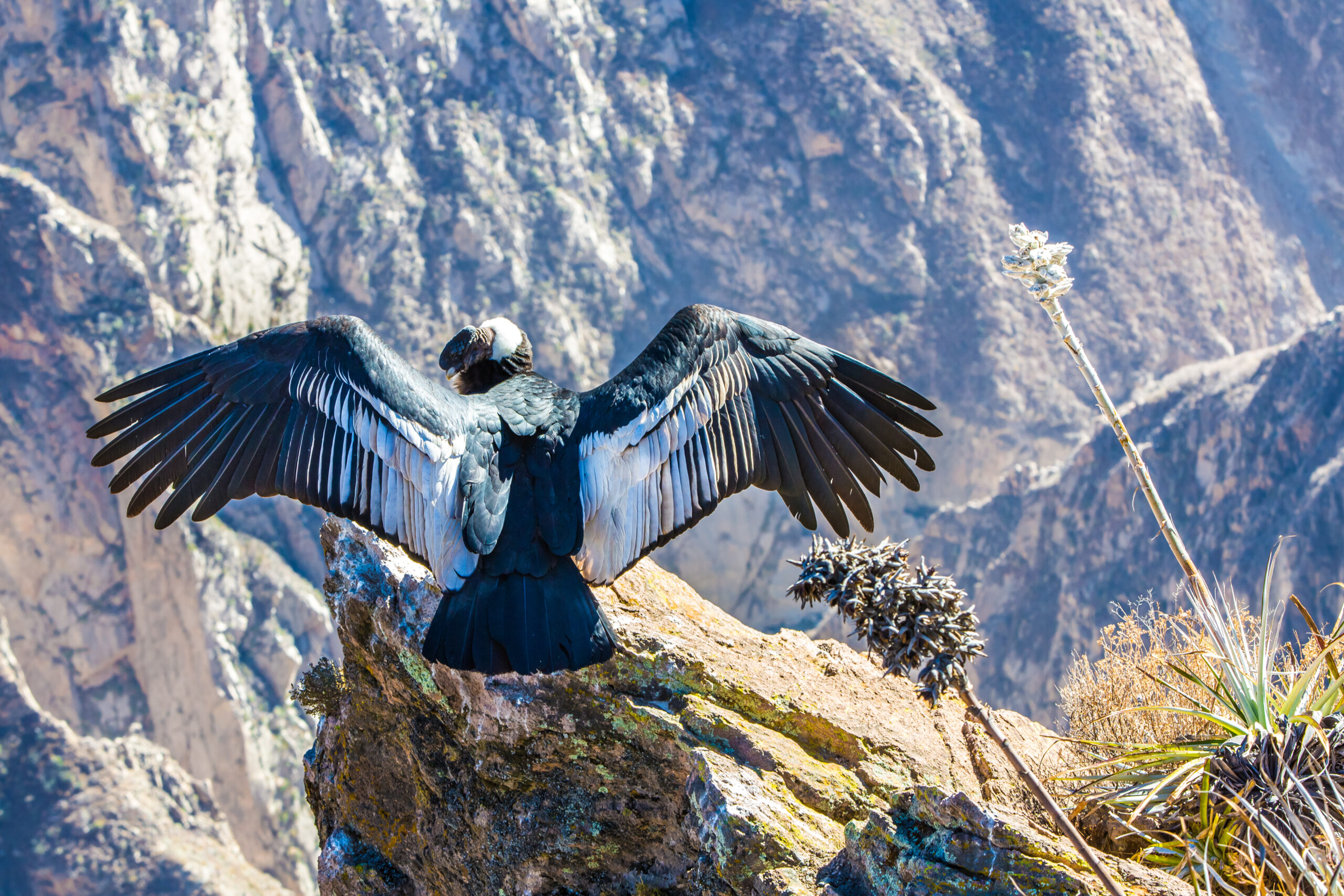
Impressive Andean condor on a crag
The Vicuña is an animal native to Peru, related to the llama and alpaca, an icon of Peru’s high-altitude plains. They were revered as sacred animals with a direct connection to the gods. They are a highly protected species in Peru and can live up to 25 years. They are herbivores that consume the Andean plateau’s clumped grass and shrubs. Vicuñas encourage sustainability and protection in these regions, enabling the rest of the local fauna and flora to grow naturally and be protected.
To warn and defend his herd, the group leader will blow a high-pitched whistle at the first sign of danger. Their population has now surpassed 200,000 as a result of government sustainability efforts. They are known for their soft, luxurious wool, frequently used to produce high-end garments; therefore, hunting is their primary threat. It is now the world’s most scarce and expensive luxury wool. They sleep and graze in different parts of the grasslands they call home; at night, they move to plains at a higher altitude to rest.
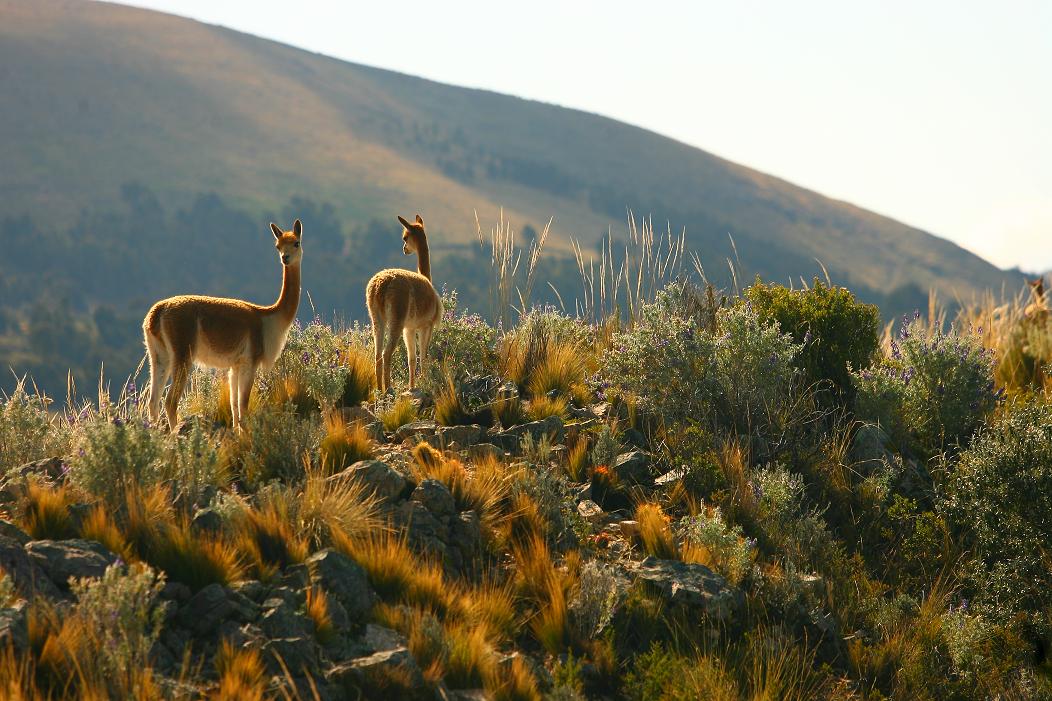
Vicuñas and a beautiful peruvian landscape
The Giant Otter is indigenous to South America and is found in a limited number of habitats, one of which is Peru. At six feet in length, these otters are the largest in the world. Giant river otters are friendly creatures that hunt in groups of 3 to 10 individuals. They frequently swim together in rivers and lakes and are well-known for their playful nature.
Being semi-aquatic mammals, they require habitat on land as well as in water to thrive. It is a carnivorous species that consumes fish as its primary food source—playing a significant role in maintaining the trophic balance of the aquatic ecosystem. Right now, overharvesting of fish, habitat degradation from mining and agriculture, and hunting for its skin pose the most significant risks to populations of giant river otters.
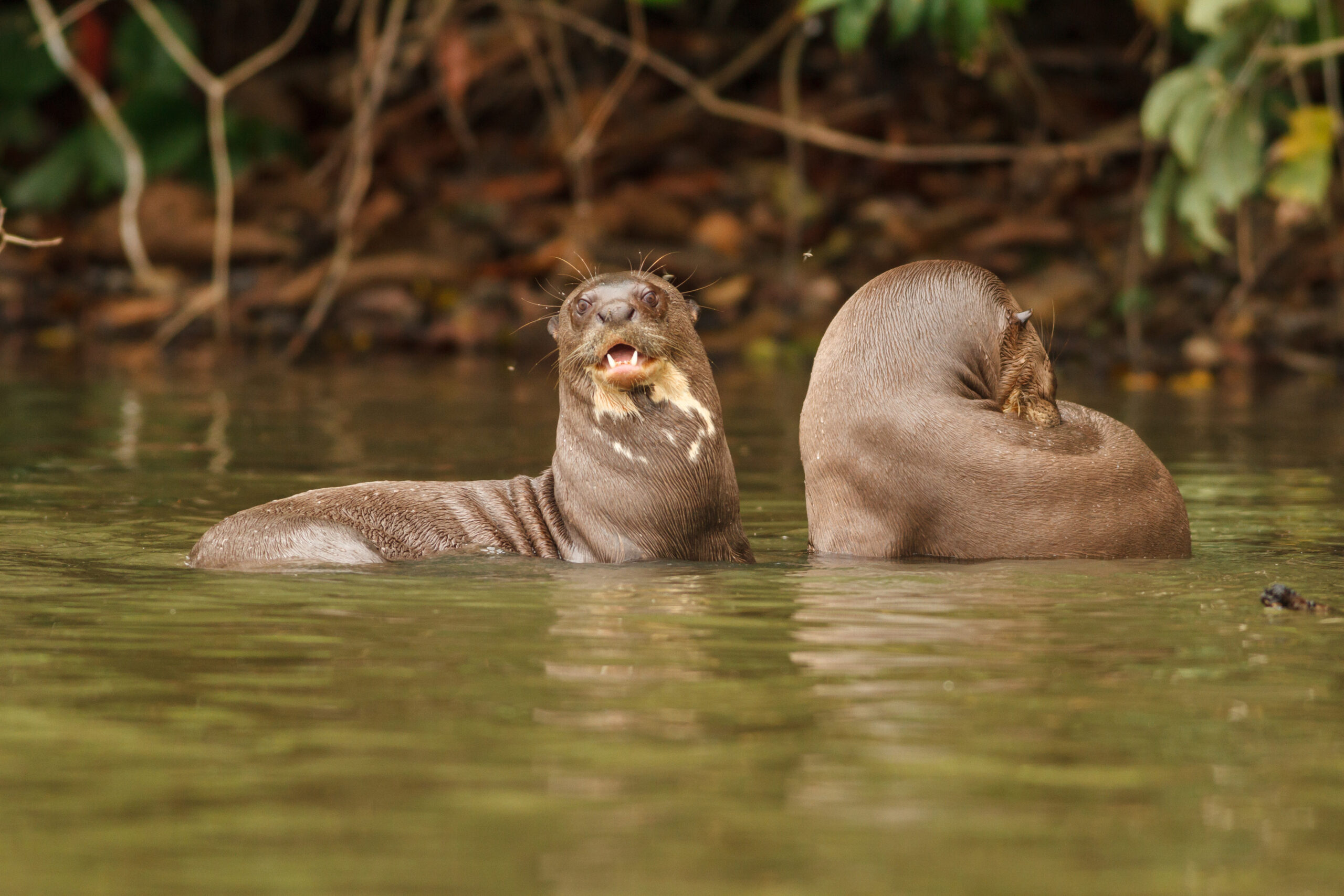
Giant River Otter in Peru
The largest big cat and most powerful predator in the Americas, the jaguar is present throughout Peru, even in the Amazon rainforest. Jaguars are covered in rosettes with dots inside them, giving the impression of eyes. They are carnivores, and their diet can include 87 species of animals. Most of the jaguar’s prey, peccaries and other small mammals, depend on the amount of fruit and plants found in the fertile soils.
Deforestation and overhunting threaten their habitat even though they are among the most feared predators in the animal kingdom. The conflict between humans and habitat loss and degradation provides a persistent threat to the jaguar. The jaguar is referred to as “otorongo” in Peru. The word “jaguar,” which means “beast,” is derived from the Tupi-Guaraní language. Although jaguar sightings are rare, getting the opportunity to spot one in the wild is a unique and unforgettable experience.

Jaguar in Amazon rainforest, Peru
Wildlife in Peru has a wide variety of species, including monkeys, but one of the most interesting is the Howler Monkey. The largest primate that can be heard before it is seen in the Peruvian Amazon rainforest. They are a variety of colors, such as brown, red, or black, with brown or blond. They have a distinct territorial call that can be heard from miles away. Usually, they reside in groups of around 6 to 15.
These primates are experts at navigating the forest canopy due to their strong limbs and tails. They grasp branches with their tails or hang from them. Its primary diet consists of leaves, flowers, and fruit. The loss of habitat from logging and tree cutting is the greatest threat to howler monkey populations. Therefore, supporting conservation activities is critical to ensure their habit’s safety.
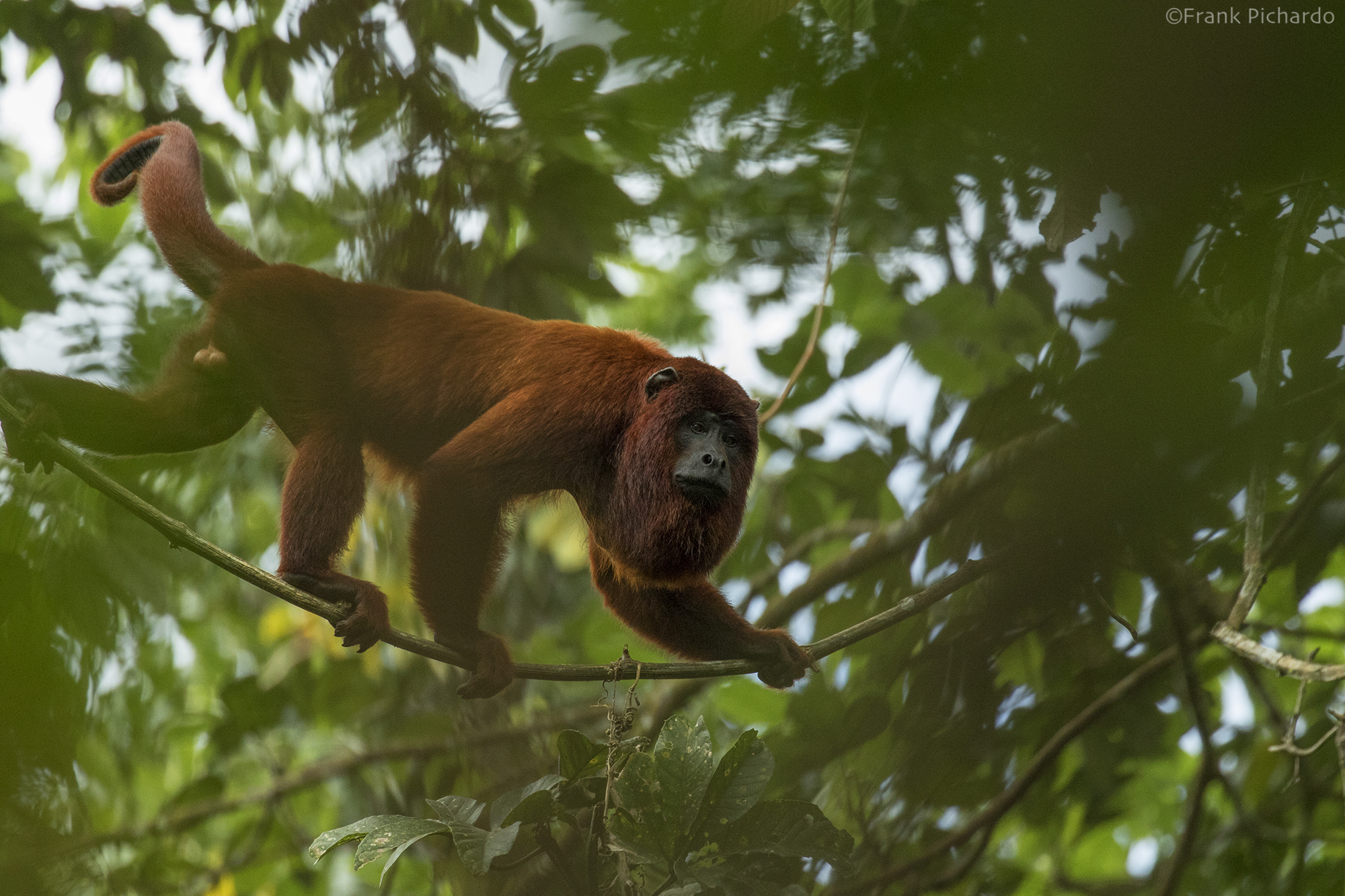
Howler Monkey, Peru
Found in the Amazon rainforest, this unique armored mammal is known for its remarkable digging skills. They can grow to a maximum weight of 72 pounds (32.5 kg) and a length of 5 feet (150 cm). Their long claws, which can reach up to 8 inches/20 cm in length, can break through termite mounds and search for underground insect nests. Having been seen to excavate multiple large holes every hour for various purposes, like feeding or resting. Other animals, including birds, reptiles, and mammals, also use their burrows.
As omnivores, they primarily consume termites, although they also occasionally eat specific types of fallen fruit, ants, and other invertebrates. It is the largest living species of armadillo. In addition, this species is considered vulnerable to extinction because of their shy nature as well as their specialized diets, which require more research to guarantee their future survival.
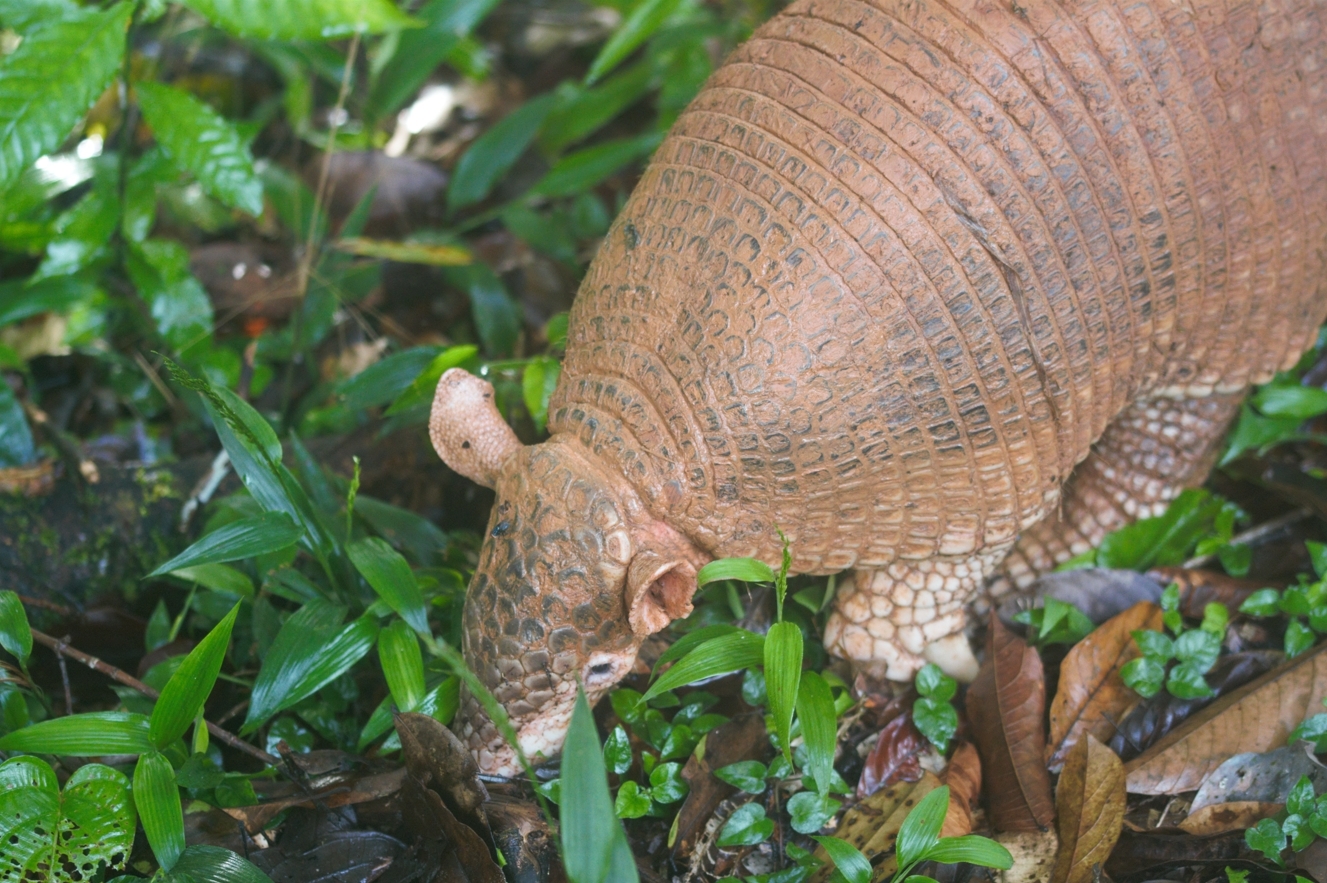
Giant Armadillo digging, Peru’s Wildlife
Uncovering Peru wildlife is an experience unlike any other, with various mesmerizing species, including jaguars, condors, vicuñas, and playful otters. If you have an adventurous spirit, rest assured that Peru is an excellent choice to enhance your knowledge of flora and fauna while being captivated by the stunning beauty of this country’s diverse regions. Peru is a premium destination you won’t want to miss, whether you’re a seasoned wildlife enthusiast or just looking to experience something new and unique while traveling. So, pack your binoculars, grab your camera, and venture on an impressive journey to Peru.
The Amazon rainforest is incredibly unique and diverse. Millions of species can be found here, most of them undiscovered. It covers 40% of the South American continent. Making it the world’s largest and lushest rainforest, protecting parts of eight South American countries like Brazil, Peru, Ecuador, Colombia, and others. The Amazon includes diverse ecosystems and vegetation types, including seasonal forests, deciduous forests, and more. It is the perfect residence for multiple species like sloths, spider monkeys, and poison dart frogs. On the other hand, it’s a haven for more than a thousand species of birds—for example, hummingbirds, channel-billed toucans, macaws, etc.